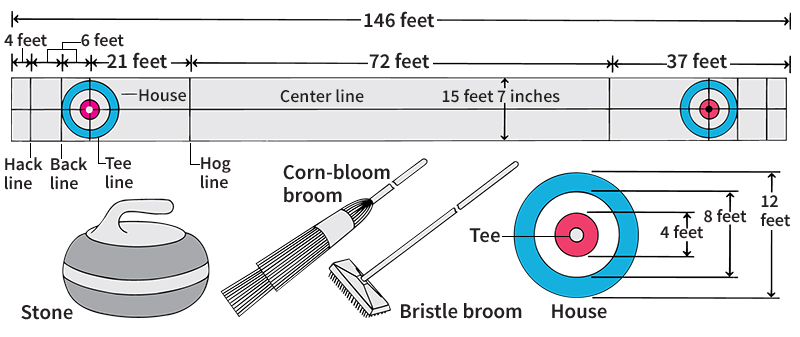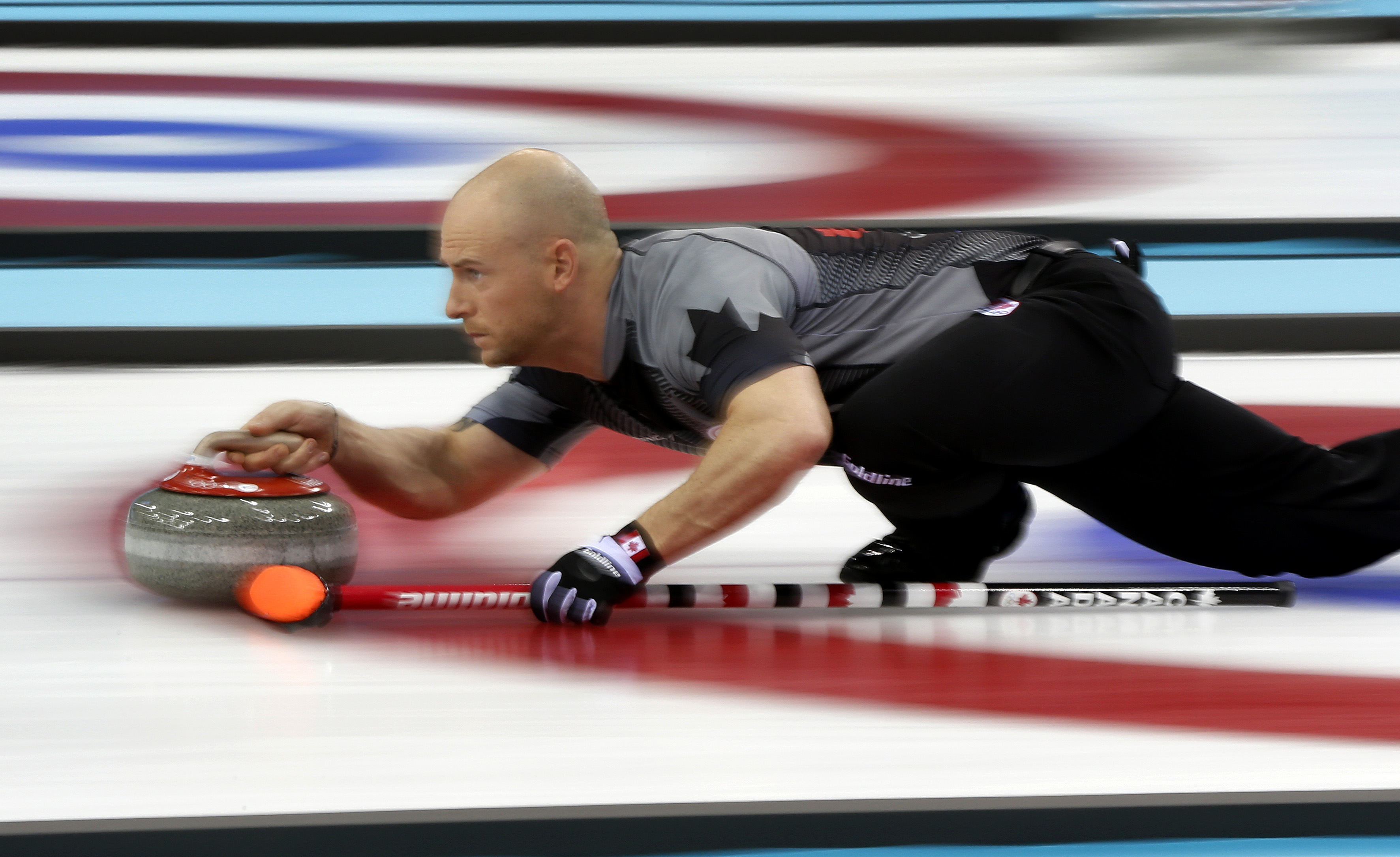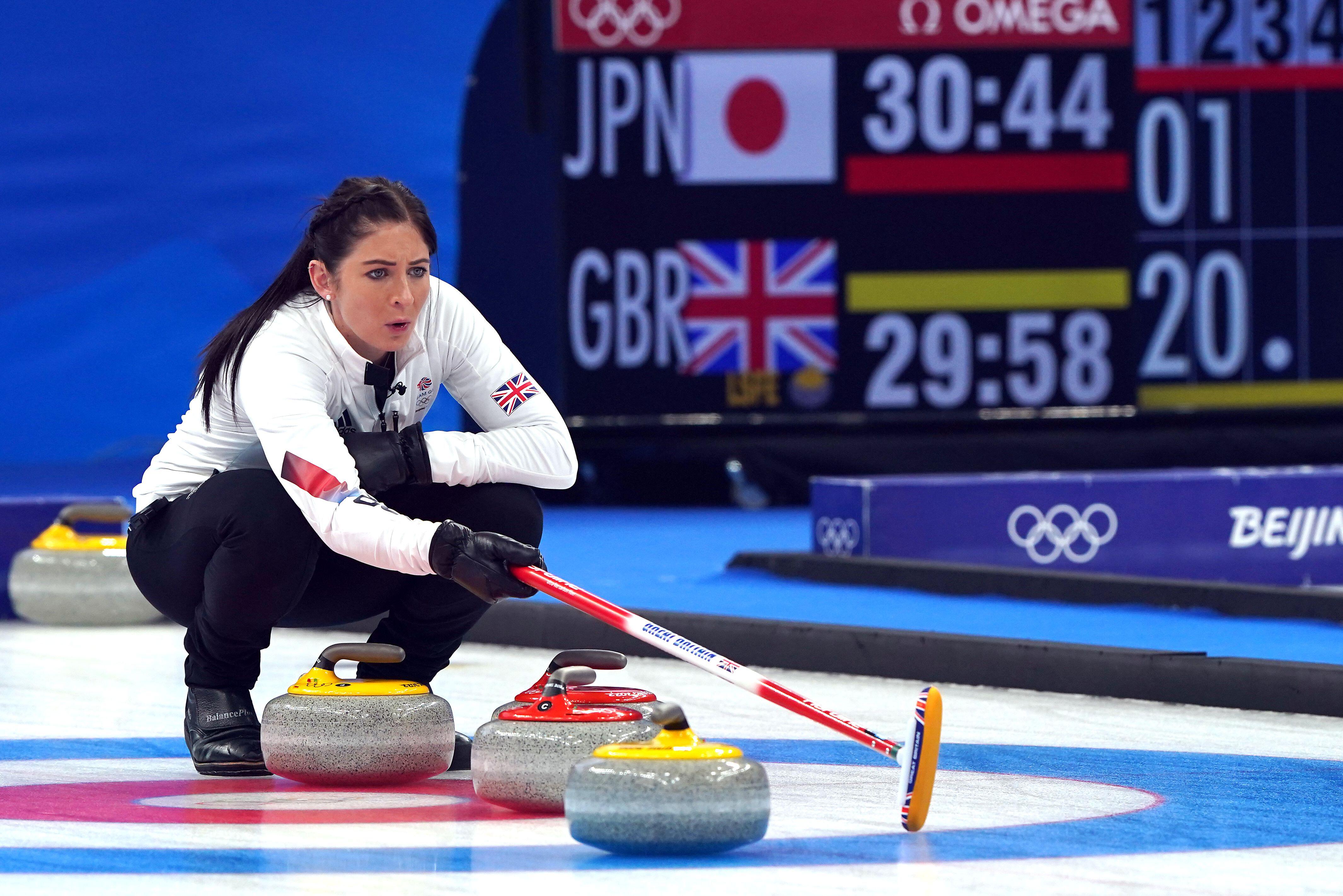Curling is a game played on a level sheet of ice sprinkled with water droplets. Two four-player rinks (teams) compete on a sheet of ice 146 feet (45 meters) long and 15 feet 7 inches (5 meters) wide. The players slide stones on the ice toward a target. Curling probably began in Scotland and the Netherlands about 400 years ago. It has become popular in more than 30 countries, including Canada and the United States. In 1998, curling became a sport in the Winter Olympic Games.
The game.
Each player slides two stones toward the house (target), a 12-foot (3.7-meter) circle at the far end of the ice. The competitors deliver one stone at a time, alternating with their opponents. When all 16 stones have been delivered, a period called an end has been played. A game usually consists of 8 or 10 ends and lasts 2 to 21/2 hours. The stones of one rink that are closer to the house’s center than any stones of the opposing rink score one point each. The opposing rink receives no points in that end.

Players deliver the stones from a hack (foothold) 126 feet (38 meters) from the center of the house at the far end of the ice. The stones used in most regulation matches weigh 421/2 pounds (19.3 kilograms). Each stone has a handle on top.
To deliver the stone, the player puts one foot in the hack, then crouches with the feet together. The stone rests on the ice to the player’s side. Grasping the handle, the player slides the stone straight back and rises from a crouching position. The stone may or may not come up off the ice during the backswing. Then, as the arm and stone swing forward, the player turns the hand either in or out. This action causes the stone to turn as it is released, and it curls (curves) to the right or left as it slides along. The game gets its name from this action. 
The rink.
In club competition, a rink is composed of a lead, a second, a third, and the skip or captain. They deliver the stones in that order. The lead, who is usually the least experienced player, goes first because it is simpler to deliver with no stones on the ice. In curling tournaments, called bonspiels, and in national and international competition, a rink consists of four experienced players. 
Before the first player delivers, the skip moves to the house at the far end of the ice. The skip indicates with a broom the spot at which the stones should be aimed. After each stone is delivered, the skip judges the line and the sweepers judge the speed of the rock. If the rock is off the intended line of delivery, the skip shouts, “Sweep.” The other two players then move ahead of the sliding stone, sweeping the ice with their brooms. Sweeping alters the ice surface and lessens resistance to the stone. It can add 6 to 10 feet (1.8 to 3 meters) to a delivery. Players usually use brooms with a flat, synthetic brush head. After delivering two stones, a player joins a teammate in sweeping for the other members of the rink.
